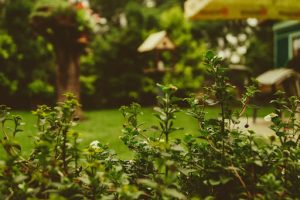Can Your Garden Landscape Lead To Fire? How to Prevent It?
 When you think of your back yard, garden, plants, or trees catching on fire, the first place that pops up in your head is the Californian wildfires. But fires can happen anywhere, whether they are naturally occurring or not. Especially in the western and southern states, where the air pressure strengthens the fire than putting it out, keeping your garden landscapes is a must.
When you think of your back yard, garden, plants, or trees catching on fire, the first place that pops up in your head is the Californian wildfires. But fires can happen anywhere, whether they are naturally occurring or not. Especially in the western and southern states, where the air pressure strengthens the fire than putting it out, keeping your garden landscapes is a must.
There is always a lingering threat of fire, so landscaping accordingly is essential. However, it is important to note here that ideally, any landscape can’t actually become “fire-proof.” But you can take many necessary precautionary steps to minimize the risk involved. Here are six excellent ways you can ensure your garden landscape is fire resistant.
Include a Free Zone
One of the most important steps you can take while designing your garden landscape is to include a defensible space around your housing perimeters. Experts recommend having at least a 30-foot long free zone that is ideally separated from all the buildings like the house, outside attic, yard, deck, etc. This area serves as a free zone from the fire for both parties involved, i.e., the residents and the firefighters. It allows the residents to escape in case of a fire and for firefighters to put off the fire, making it easier for them to save the house.
Add Short-Walled Boundaries
Instead of one continuous garden landscape design of grass and shrubs, it is much better to add short-walled boundaries, especially around the sidings. If you have big, old trees in your home garden, securing them behind a short wall will add extra protection from catching on fire from nearby. Moreover, these boundaries can be bricked or made of fire-resistant insulin to immediately stop the fire in its tracks from spreading across the whole lineup of the plant. Your flower beds can be neatly tucked behind these short walls, and stay safe.
Remove All Highly Flammable Plants
Believe it or not but while you may think all plants can easily catch on fire, certain highly flammable plants can strengthen fire and allow it to incur more damage. Therefore, it is essential that no matter how much you like the following plants, you remove all of them or not add them at all in your landscape design to minimize potential fire hazards: Italian cypress, pine, fir, spruce, eucalyptus, junipers, palms, Japanese honeysuckle, and some ornamental grasses. Even if you want to include these plants, it is best to plant them away from the housing building and create short-walled boundaries around them.
Use Pathways to Divide Patches
Similar to short-walled boundaries, another great way of stopping a spreading fire from catching along is to create pathways and divide your garden landscape into patches. This means that if the plants and shrubs tend to dry out during fall, the leaves and twigs wouldn’t gather together and instead lay around in patches. It also allows more room to maneuver in case of fire and minimizes the risk of a big fire catching up. Experts recommend having at least 4 feet wide pathways in an irregular symmetry to disengage the fire.
Do Regular Maintenance Checks on Your Plants
There is no way going around this one. No matter what season it is or what weather condition you face, a regular maintenance check on your plants is necessary. Whether you hire a professional gardener to do the job for you or you do it yourself – a regular plant maintenance job can save you the dangers of landscape fire. It is important not only to keep your plant life healthy and beautiful but to remove any dead and dried twigs, leaves, and shrubs that are a breeding ground for a potential fire.
Use LED Lights for Landscape Lighting
Lastly, go high-tech on your landscape lighting needs and choose LEDs over the traditional spotlights. One of the most common reasons for garden landscape fires has to be garden lights warming up and lighting the nearby grassland or leaves on fire. Because LEDs never burn warm enough to trap heat and light up the leaves on fire, your landscape should be safe. However, it is just as important to keep the light clean from debris and maintain the surrounding area by removing all leaves and grown grass. It is always better to be safe than regret later on.
Final Thoughts
With winters around the corner and the crisp fall breeze blowing the leaves, it is better if you rake up all those dried leaves and twigs. The dangers of a fire hazard are waiting to happen because of those dried leaves in your garden. Hence, start by planning and maintaining your garden landscapes accordingly and never downplay the dangers of fire.
Looking for restoration services in the Virginia Beach area? You have reached the right place! When your home or business has experienced fire damage, you can rely on the 911 Restoration of Virginia Beach for comprehensive cleanup and restoration services. Our fire damage restoration specialists are available round the clock every single day to ensure a fresh start for you!



